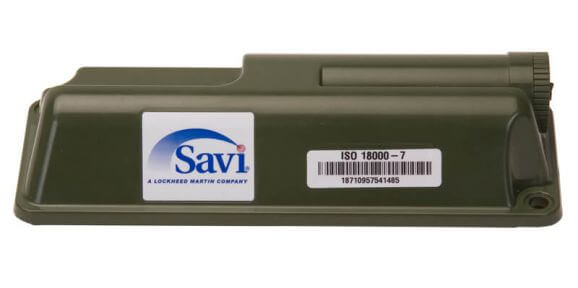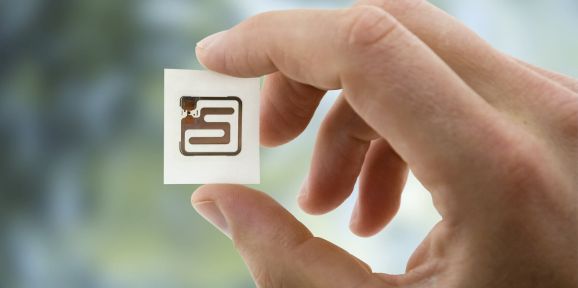Preparation for RFID Certification Exam
Cheat Sheet – What is RFID
MAIN OBJECTIVES
- Define RFID technology, what it is and its working principles.
- Recognize main types of RFID systems based on communication:
- Passive (no power source but derives its power from the reader’s transmission)
- Battery Assisted or Semi-Passive (tag has a battery to assist with transmitting response to the reader but relies on the reader transmission to initiate action or wake up, does not beacon)
- Active (tag has a battery and does not rely on reader transmission for any power needs)
- Know characteristics of these categories and how they impact:
- Data Transfer Rate
- Read Range
- Cost
- Typical Applications
- Frequencies normally used
- Behavior around water based liquids and metals
- Regulations
- Modes of operations (inductive/capacitive)
- Types of antennas used
PASSIVE RFID
The passive RFID tag has no power source but derives its power from the reader’s transmission. It often comes in form of a flat inlay or a label and is the simplest type of RFID tag.
Frequencies normally used
- Low Frequency (LF) – 120 – 150 kHz
- High Frequency (HF) – 13.56 MHz
- Ultra-High Frequency (UHF) – 860 – 960 MHz
- Microwave Frequency 2.45 GHz
Data Transfer Rate – depends on frequency and is function of the wave
- LF – very slow
- HF – slow
- UHF – fast
- Microwave – ultrafast
Read Range – shortest, up to 30 ft, depends on frequency
- LF – up to few inches
- HF – up to 3 feet, most often 3- 5 inches
- UHF – up to 30 ft
- Microwave – few inches max.
Cost – lowest, starting at 5 cents per tag in high volumes
Typical Applications
- Inventory tracking
- Asset tracking, access control
- Warehouse, hospital, office, events
Behavior around water based liquids and metals – depends on frequency:
- LF, HF – can read through aqueous liquids
- UHF, Microwave – cannot read through aqueous liquids
- No frequencies can read through metal and tags get detuned when placed on or near metal objects.
Regulations
- FCC Part 15.247 – governs UHF allowed transmitted power from the reader/interrogator (maximum 4 W EIRP), frequency hopping channels (50) and the channel width (500 kHz).
- For systems using digital modulation in the 902-928 MHz, 2400-2483.5 MHz, and 5725-5850 MHz bands, the maximum peak conducted output power of intentional radiators is 1 watt.
- ETSI 302 208 (newer)
- 865.0 – 868.0 MHz
- 15 channels – 200 kHz each
- Three sub-bands
- Up to 2 W ERP in subband 865.6 – 877.6 MHz (10 channels)
- Required LBT
- ETSI 300-220 (older, restrictive)
Standards (air interface)
- LF – ISO/IEC 18000-2
- HF – ISO/IEC 18000-3, ISO/IEC 15693, ISO/IEC 14443
- UHF – ISO/IEC 18000-6 (A, B, C), EPC Global/GS1 Class 1 Gen 2 (ratified into ISO 18000-6C)
- Microwave – ISO/IEC 18000-4 for 2.45 GHz, (ISO/IEC 18000-5 for 5.8 GHz (withdrawn due to lack of use)
Modes of operation – based on frequency
- LF, HF – Inductive coupling – based on changes in the magnetic field
- UHF, Microwave – Capacitive coupling also called passive backscatter – based on changes in the electric field
Types of antennas used
- LF, HF – coil antenna
- UHF, Microwave – dipole antenna
BATTERY ASSISTED PASSIVE RFID (BAP) OR SEMI-PASSIVE RFID
The battery assisted passive RFID tag (also called BAP or semi-passive tag) relies on the initial transmission from the reader and then uses a battery to assist with transmitting response to the reader. This allows for longer read ranges. The BAP tags have often integrated sensors.
Frequencies normally used
- Ultra-High Frequency (UHF) – 860 – 960 MHz
- Microwave Frequency 2.45 GHz
Data Transfer Rate – depends on frequency and is function of the wave
- UHF – fast
- Microwave – ultrafast
Read Range – medium, up to 100 ft, depends on frequency and technology
- UHF – usually up to 100 ft (depends on technology)
- Microwave – usually up to 30 ft (depends on technology)
Cost – high, starting at several dollars per tag
Typical Applications – applications with sensors – temperature tracking for inventory, transportation, assets; regular and returnable asset tracking where long read ranges are necessary
Behavior around water based liquids and metals – depends on frequency:
- UHF, Microwave – cannot read through aqueous liquids
- No frequencies can read through metal.
- Tags are encapsulated and can be tuned to perform well on metal.
Regulations
- FCC Part 15 – governs UHF allowed transmitted power from the reader/interrogator (maximum 4 W EIRP), frequency hopping channels (50) and the channel width (500 kHz).
Standards (air interface) – compatible with passive readers if compliant with the same standards as below:
- UHF – ISO/IEC 18000-6 (A, B, C), EPC Global/GS1 Class 1 Gen 2 (ratified into ISO 18000-6C)
- Microwave – ISO/IEC 18000-4 for 2.45 GHz, (ISO/IEC 18000-5 for 5.8 GHz (withdrawn due to lack of use)
Modes of operations – based on frequency
- UHF, Microwave – passive backscatter – based on changes in electric field – aided by the battery
Types of antennas used
- UHF, Microwave – dipole antenna
ACTIVE RFID
The active RFID tag has a battery and does not rely on reader transmission for any power needs. It can beacon and have integrated sensors.
Frequencies normally used
- Ultra-High Frequency (UHF) – 433 MHz
- Microwave Frequency – 2.45 GHz
- Ultra Wide Band (UWB) Frequency 3.2 – 10 GHz
Data Transfer Rate – depends on frequency and is function of the wave
- UHF – fast
- Microwave – ultrafast
- UWB Frequency – fastest
Read Range – longest
- UHF up to 1000’s of feet (depends on technology and power source)
- Zigbee – about 30 – 300 ft (10 – 100 m)
- WiFi IEEE 802.11n – up to 820 ft (250 m)
Cost – highest, starting around $20 per tag (ballpark price)
Typical Applications
- Applications with sensors – temperature tracking for inventory, transportation, assets; tamper sensors;
- Long range tracking – cars, rail cars, containers for transportation and control in depots, docks, shipyards, military, etc.,
- Real-time location systems (RTLS) – Both Wi-Fi and UWB technology is often used for RTLS and UWB is one of the most accurate technologies for location.
Behavior around water based liquids and metals – depends on frequency:
- Cannot read through aqueous liquids.
- No frequencies can read through metal.
- Tags are encapsulated and can be tuned to perform well on/around metal.
- Due to the tag having a battery and transmitter and therefore stronger signal, the signal can bounce/bend around metal objects, which means that active RFID has usually better performance in metal environments.
Regulations
- FCC Part 15 – governs allowed transmitted power from the reader/interrogator (maximum 4 W EIRP), frequency hopping channels (50) and the channel width (500 kHz).
Standards (air interface):
- UHF – ISO/IEC 18000-7 for 433 MHz
- Microwave – ISO/IEC 18000-4 for 2.45 GHz
- DASH7 (2nd gen of ISO 18000-7) for 433 MHz
- Wi-Fi IEEE 802.11n – 2.45 GHz
- Zigbee IEEE 802.15.4 for 868/915 MHz or 2.45 GHz
Modes of operations
- Active transmission
Types of antennas used
- Dipole or monopole antenna

Active RFID Tag
